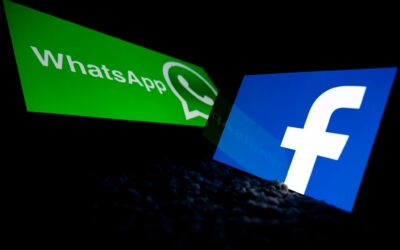Apple is preparing to update both the AirPods and the AirPods Pro, according to a new report that suggests they are part of a wide range of new audio products being planned by Apple.Both versions of the wireless earphones will get smaller, according to the new report from Bloomberg. While the AirPods will lose some of the stems that come down from the ear, making them look more like the AirPods Pro, the AirPods Pro could lose their stalks almost entirely to make them more like earbuds, the report claims.Other companies – such as Google and Amazon – have already released AirPods competitors of their own that feature such a design, nestling in the ears without the stem that falls out and down.In addition to those design changes, Apple could add extra battery life, the report claimed. It could also introduce new wireless chips to power both versions of the AirPods, which currently use small Apple processors for features such as noise cancellation and managing connections to devices.Apple has been rumoured to be planning another event for November – the third in three months, after one for the Apple Watch and iPad in September and then the iPhone last month – during which it is widely rumoured to be showing off the first Macs that contain its own “Apple Silicon” chips. It appears unlikely that the new AirPods will be unveiled at that event, though other audio equipment could be.The new versions of the AirPods could arrive next year, the report indicates. That would see them launched alongside a possible HomePod that would sit between the current larger smart speaker and the Mini that was unveiled at the iPhone event, as well as the long-rumoured “AirPods Studio”.Those are said to be designed as headphones rather than earphones, while keeping much of the same technology that allows the AirPods to integrate with other Apple products, for instance.Those headphones have been in development for at least two years and could be ready as soon as next month, various reports have indicated. But the company has faced a run of development challenges with those earphones and it has already been delayed repeatedly, the report claimed.The latest issue relates to the headband, with testing reporting that the headphones were too tight when worn. That set back production, which was due to begin weeks ago, Bloomberg reported, citing a person familiar with the matter.It has also had to scale back some features such as large touch pads across the sides of the headphones, which are now smaller, and replaceable components that will now be limited to the earopads rather than the headband.
The Independent Articles
Nasa announces that Moon definitely has water in major breakthrough that could allow travel into deep space
Water has been definitively found on the Moon, Nasa has said, and there are a set of “water traps” that could hold it stably.The research suggests that water could be distributed right across the lunar surface, not just trapped in the cold, shadowed parts of the Moon.The discovery is a major breakthrough in the mission to explore the rest of the solar system, as well as giving a better understanding of the lunar surface.It also raises new questions about how exactly the water got there, and how it is able to survive the harsh conditions on the Moon.It could, for instance, be trapped in “glass beads” on the surface that form when micrometeorites crash into the Moon and melt a part of the lunar surface, either forming water or capturing it in the beads as it does.Scientists had previously thought that any water on the sunlit side of the Moon would immediately be lost. But it appears that it is in fact present, and not just on the parts that are shaded from the sun.Nasa was keen to stress that the amount of water is very limited, with the new discovery representing only around one per cent of the amount of water found in the Sahara desert. But even that very small amount of water was not previously confirmed to exist, and it remains unclear how it could be created or stay on the surface.Researchers had previously found evidence of hydration on the lunar surface. But it was unclear whether that hydrogen was in the form of hydroxyl – the chemical that makes up drain cleaners – or in the form of H2O, or water.Now scientists have found unambiguously that there is a water on the surface.“We had indications that H2O – the familiar water we know – might be present on the sunlit side of the Moon,” said Paul Hertz, director of the Astrophysics Division in the Science Mission Directorate at NASA Headquarters in Washington.“Now we know it is there. This discovery challenges our understanding of the lunar surface and raises intriguing questions about resources relevant for deep space exploration.”That could be used for humans who travel to the Moon and create a permanent lunar base there, as Nasa hopes to. It could also help create fuel to travel elsewhere in the solar system.Nasa hopes to head to the Moon in 2024, taking the first person in more than 50 years and the first woman ever to step foot on the lunar surface. By the end of the decade, it wants to have established a “sustainable human presence” on the Moon.Water is critical for exploring space: not just as a fuel or drinking, but it can also be turned into oxygen to breathe. But it is heavy, and therefore very expensive to be carried into space on a rocket, and so finding it on the Moon could make space travel significantly cheaper and easier.“Water is a valuable resource, for both scientific purposes and for use by our explorers,” said Jacob Bleacher, chief exploration scientist for NASA’s Human Exploration and Operations Mission Directorate.“If we can use the resources at the Moon, then we can carry less water and more equipment to help enable new scientific discoveries.”Scientists still don’t know exactly where the water is being stored on the Moon, or if it can be used at all. They said the new discovery is just the beginning of future research that will involve exploring the state and location of the water on the surface.“Without a thick atmosphere, water on the sunlit lunar surface should just be lost to space,” said Casey Honniball, the lead author, who published the results from her graduate thesis work at the University of Hawaii at Mānoa in Honolulu. “Yet somehow we’re seeing it. Something is generating the water, and something must be trapping it there.”Researchers suggest that in some cases tiny patches of ice might exist in permanent shadows no bigger than a penny.They explored phenomena on the moon called cold traps, which are shadowy regions of the surface that exist in a state of eternal darkness.It is thought that many have gone without a single ray of sunlight for potentially billions of years.Now scientists say there may be a lot more of these nooks and crannies than previous data suggests.Paul Hayne, assistant professor in the laboratory of atmospheric and space physics at University of Colorado Boulder, said: “If you can imagine standing on the surface of the moon near one of its poles, you would see shadows all over the place.”Many of those tiny shadows could be full of ice.”Drawing on detailed data from Nasa’s Lunar Reconnaissance Orbiter, the researchers estimate the moon could harbour roughly 15,000 square miles of permanent shadows in various shapes and sizes.According to scientists, these might be reservoirs capable of preserving water via ice.Prof Hayne added: “If we’re right, water is going to be more accessible for drinking water, for rocket fuel, everything that Nasa needs water for.”In one of two papers published in Nature Astronomy, Casey Honniball, from the University of Hawaii, and colleagues analysed data from the Stratospheric Observatory for Infrared Astronomy (Sofia) airborne telescope that observed the moon at six micrometres.At this wavelength, they were able to detect a spectral signature of water that is not shared with other hydroxyl compounds.They found water is present at high southern latitudes.The observations arose from something of a test observation, to see whether Sofia could examine the Moon. The flying observatory is usually used to look deeper into space, and it was not clear that it could even see the lunar surface properly since it is so close and bright.“It was, in fact, the first time SOFIA has looked at the Moon, and we weren’t even completely sure if we would get reliable data, but questions about the Moon’s water compelled us to try,” said Naseem Rangwala, SOFIA’s project scientist at NASA’s Ames Research Center in California’s Silicon Valley, in a statement.“It’s incredible that this discovery came out of what was essentially a test, and now that we know we can do this, we’re planning more flights to do more observations.”In the other study, Prof Hayne assessed a whole range of possible sizes for cold traps, down to one centimetre in diameter.The team found that small-scale micro cold traps – some just 1cm wide – are hundreds to thousands of times more numerous than larger cold traps, and they can be found at both poles.The authors suggest that approximately 40,000 square km of the lunar surface has the capacity to trap water.Researchers say the findings indicate water is efficiently produced or delivered on the moon by various processes, and is likely to be stored in the moon’s cold traps at both polar region.The team pulled data from real-life observations of the moon, then used mathematical tools to recreate what its surface might look like at a very small scale.They say it is a bit like a golf ball.However the researchers caution that they cannot prove these shadows actually hold pockets of ice, and the only way to do that would be to go there in person or with rovers and dig.But they say the results are promising, and future missions could shed even more light on the moon’s water resources.Prof Hayne said: “Astronauts may not need to go into these deep, dark shadows.”They could walk around and find one that’s a metre wide and that might be just as likely to harbour ice.”Additional reporting by Press Association
OnePlus Nord N10 5G and N100: New phones are company's latest budget devices
The Nord N10 5G, which OnePlus touts as the “most accessible premium 5G experience”, comes with 6 GB of RAM and 128 GB of storage, as well as Qualcomm’s Snapdragon 690 chipset.It also has a 6.49-inch FHD+ display with a 90Hz refresh rate, and a 4300mAh battery equipped with fast-charging capabilities.While the original Nord had an in-screen fingerprint scanner, the Nord N10 5G has one on the back of the device similar to the Pixel 5. It also has dual stereo speakers, which the original Nord lacked.With regards to the camera, the OnePlus Nord N10 5G comes with a 64MP main lens, an 8MP 119-degree ultra-wide lens, a 2MP macro lens for small-scale detail and a 2MP monochrome lens for depth. The selfie camera, meanwhile, has a 16MP resolution, housed in a holepunch notch.The N100, meanwhile, is the lowest-priced Nord device, but is better than its siblings in some respects.It comes with a 6.52-inch display, larger than the N10 5G, and has a bigger batter at 5000mAh (albeit one that charges more slowly, with only an 18W fast-charge capability compared to the 30W on the N10 5G).Inside, the N100 uses the Qualcomm Snapdragon 460 chipset, with 4GB of RAM and 64GB of storage, expandable via a MicroSD card. It has a 13MP main camera, a 2MP macro lens, and another 2MP bokeh lens for depth. The front-facing camera has an 8MP resolution.Both devices charge via USB-C, have 3.5mm headphone jacks, and run Android 10 with OxygenOS – OnePlus’ Android skin – layered over the top.The OnePlus Nord N100 will be available for £179 from 10 November, while OnePlus Nord N10 5G will cost £329, with a release date later in November. Notably, both devices will also eventually hit North America, although OnePlus did not say when they would be making their debut.
Nasa Moon news – as it happened: Major discovery of ‘water traps’ on lunar surface announced
Nasa has announced the “unambiguous” presence of water on the Moon.The major announcement “contributes to Nasa’s efforts to learn about the Moon in support of deep space exploration”, the US space agency said.A live stream of the event appeared on Nasa’s website, as well as on its official YouTube channel.You can follow all the latest updates here.Show latest update
1603709001Welcome to The Independent’s live coverage of Nasa’s “exciting new discovery” about the Moon.Is it signs of alien life? Are there creatures living in lava tubes? Or is the moon actually made of cheese?
A media conference will reveal all of the details, though plenty of hints may have already given us an indication of what to expect – and it could have huge consequences for the future of humanity.Anthony Cuthbertson26 October 2020 10:411603709753Taking part in today’s media conference are Paul Hertz, Jacob Bleacher, Naseem Rangwala and Casey Honniball.Those first three names are all senior members of staff within various divisions of Nasa. The final name gives perhaps the biggest clue of what this announcement might be.Casey Honniball is a postdoctoral fellow at Nasa’s Goddard Space Flight Center who has conducted extensive research into how we might find water on the Moon.
Boston Dynamics robot dog will get an arm on its back so it can open doors and grab things
Boston Dynamics has said that its robot dog, Spot, will soon be upgraded with an additional robot arm.Spot, which recently became commercially available for $74,500 (approximately £60,000), has apparently been purchased 260 times according to the company’s CEO Rob Playter.The arm is set to become available early in 2021, with six degrees of freedom and the capability to open doors and pick up objects.“Like the base robot,” Boston Dynamics says, “there’s much more to the arm than just hardware. It will ship with an intuitive UI, and be equipped to operate through both telemanipulation and supervised autonomous behaviours via the tablet.”The robotic limb had been featured in videos since 2018. In June this year, the company said that it would be coming “in a few months” according to the company founder Marc Raibert.“The next thing on the future Spot is that we’re going to make it available with a robot arm in a few months,” Raibert said at the time. “We have prototypes working, but we don’t have them available as a product yet.”“Once you have an arm on a robot, it becomes a mobile manipulation system. It really opens up just vast horizons on things robots can do. I believe that the mobility of the robot will contribute to the dexterity of the robot in ways that we just don’t get with current fixed factory automation.”The arm will be accessible to developers through an API, with features like grasping and dragging objects being offered as part of a beta.As well as a robot arm, Boston Dynamics also offers a $1,650 extra charger for Spot, as well as $34,570 lidar and camera system.However, the company has stressed that the metal hound is only designed for use in industry or commercial applications, and is not certified for use in the home.Boston Dynamics instead sees Spot as being used on oil rigs or places where radiation is present and humans cannot safely travel in.That includes Pick, an item-grabbing machine, and a new version of its bird-like Handle robot which can move items into shipping containers or trucks.
PS5 will have Apple TV, Netflix, Spotify, Twitch and more on release date – but not Amazon, HBO, Hulu or others
Sony has revealed the apps and streaming services that will be available on the PlayStation 5 when it launches next month.Noting that consoles are no longer just gaming platforms but that “movies, TV shows, music, and gaming livestreams only add to the PlayStation experience”, it confirmed that a range of different apps will be ready for the new console.The PS5 arrives on 12 November in a limited number of countries including the US. It will then launch everywhere else a week later on 19 November.When it does arrive, it will have Apple TV+, Disney+, Netflix, Spotify, Twitch and YouTube.As with the PS4, Spotify will work differently to the other streaming platforms, allowing it to be used as background music while playing through games.Apple TV+ is not yet available on the PlayStation 4, but it will be coming to that console too.Sony revealed the PS5’s menus in a video posted last week. That revealed that there will be a devoted section for entertainment apps, which Sony said had been done to make it “and easy to switch between gaming and entertainment content whenever you want”.It also said that the PS5 will have “a new Control Center that makes controlling your music easier than ever before, so you can quickly switch between channels, skip, and pause your music”.Sony confirmed that more apps would come eventually. They included “Amazon Prime Video, MyCanal, Hulu, Peacock, and more”, it said, but it did not give a timeframe for their release.As part of the same announcement, Sony confirmed that the four buttons on the bottom of the media remote will be reserved for quick access to streaming services: Disney+, Netflix, Spotify and YouTube. Though the remote had already been revealed, official pictures left those four lower buttons blank.As well as allowing people to control their consoles while watching videos or other entertainment, the console will be able to control compatible TVs, Sony said.
Elon Musk's SpaceX aborts launch with minutes to spare to 're-examine whole rocket'
SpaceX has aborted the launch of the latest batch of its Starlink internet satellites.The failed launch from Cape Canaveral in Florida comes just four days after the 14th batch of Starlink satellites were successfully deployed to low-Earth orbit.Such a rapid launch schedule is made possible by SpaceX’s pioneering Falco9 9 rockets, which are capable of landing after lift-off so they can be reused at a later date.“Standing down from today’s launch of Starlink to allow additional time for mission assurance work,” SpaceX tweeted.“Will announce next launch opportunity once confirmed on the Range.”SpaceX CEO Elon Musk added: “Just a small-seeming issue with loss of upper stage camera. Probably nothing serious, but standing down to re-examine whole vehicle just in case.”Thursday’s launch of 60 satellites would have grown the Starlink constellation to over 850.The network is already rolling out to a limited number of users in Canada and the United States, with plans to eventually deliver high-speed broadband to 99 per cent of the populated world.Early testers include emergency service workers in Washington State, who hooked up a satellite to connect to the network in order to provide a WiFi hub to residents in the town of Malden, which had been mostly destroyed by wildfires in September.
Twitter says ‘no evidence’ of Trump hack after president accused of using ‘Maga2020!’ password
Twitter says it has “no evidence” that Donald Trump’s account was hacked, after an ethical hacker claimed to have broken into it using just the password “maga2020!”.Juddson Deere, the White House deputy press secretary, also told The Independent that the claims by the hacker are “absolutely not true but we don’t comment on security procedures around the President’s social media accounts.”Victor Gevers, a security expert, claimed to have had access to the president’s direct messages, could change his profile, and tweet, according to de Volkskrant, which reported that it had seen screenshots from the president’s account.It only took the hacker five attempts to guess the president’s password, he claimed.Gevers apparently alerted Mr Trump and US governmental services about the breach, and was then contacted by the Secret Service.Mr Trump did not reply to an email sent to him by Gevers advising him to choose a more secure password, he said.The president’s account has reportedly been made more secure.According to Gerver’s claims, the account had previously not had two-step authentication activated for the account, which requires that a login be verified via access to another personal device such as a physical security key or authenticator app on another computer.Gevers was one of three hackers who accessed president Trump’s account in 2016, when the accounts password was reportedly “yourefired”.“That we would succeed in doing it again so soon, was not planned,” he told de Volkskrant.“I expected to be blocked after four failed attempts. Or at least would be asked to provide additional information.”The hacker was apparently shocked that it was possible for him to so easily access the president’s account.“Why is it possible for someone from a different time zone to log into such an important account? Why doesn’t Twitter demand better passwords? If I can access his account, then foreign nations can do so as well, right? Why aren’t the persons who are supposed to protect the president informed when someone reports that his account is unsafe?” he said.Contacted by The Independent, Mr Gevers refused to provide firm evidence that he had access to the account, such as emails with the Secret Service or screenshots that could only be taken when logged in as Mr Trump. “We’ve seen no evidence to corroborate this claim, including from the article published in the Netherlands today”, Twitter said in a statement. “We proactively implemented account security measures for a designated group of high-profile, election-related Twitter accounts in the United States, including federal branches of government.”Twitter would not specify what measures have been taken to secure such accounts.High-profile Twitter accounts have been compromised in the past.Scammers were able to take control of users’ accounts and ask for users to send $1,000 to a Bitcoin account with the promise that their deposit would be doubled in return.Mr Trump recently claimed that “nobody gets hacked” at a campaign event in Tucson, Arizona.”Nobody gets hacked. To get hacked you need somebody with 197 IQ and he needs about 15 percent of your password,” Mr. Trump said.Hackers can get credentials via keyloggers (tools that secretly record every key you press), phishing (a method of tricking you into giving up your personal information), and third-party data breaches.
WhatsApp adds major update to let businesses speak to users through chats
WhatsApp has added new business features intended to allow companies to chat with people as they do with friends.The tools allow businesses to more easily set themselves up as special users on the app, which then means they can open conversations that will sit alongside more traditional WhatsApp chats.But the company did stress that the business features will always requires users to choose to use them, amid fears that the inclusion of more companies could undermine the personal and private nature of WhatsApp.WhatsApp – and its owner Facebook – said the move comes as more people move to messaging companies they are buying from or dealing with, and moving away from the usual ways of getting in touch with businesses.“Many of the old ways in which people and businesses communicate are not working,” the company wrote in a blog post. “While businesses spend billions of dollars annually managing phone calls, e-mails, and SMS, people do not want to wait on hold, get passed from person to person, or wonder if their messages were received.”Instead, WhatsApp hopes it can shift users towards talking through the app, but it noted that “there is much more we need to build” before people feel confident to message businesses to get help or make purchases.The three major changes introduced in the new update are all intended to support that, and encourage more companies to conduct their work through WhatsApp and Facebook.The first of them is new shopping tools that allow users to make purchases from within a chat. Stores can host a devoted page to show the products they have for sale, and customers can then buy those products in the same way as sending a message, as well as discussing any questions through the same means.The second is the introduction of “Facebook Hosting Services”. That allows small and medium businesses to have their tools – such as products, inventory and customer service software – hosted by Facebook itself, rather than having to integrate WhatsApp’s technology with their own systems.That will mean that Facebook might be able to gather data about what customers are buying and discussing within the app. Some of the information generated through the integration with Facebook will be used for ad targeting, WhatsApp noted.The third is the introduction of business sales. While WhatsApp committed that there will be no charge for the features the app is best known for – such as text messages, and video and voice calling – it will start to charge businesses for its services.The new tools will roll out “in the months to come”, WhatsApp said.
Humans and artificial intelligence ‘see’ objects in same way, researchers discover
Researchers have discovered a “spooky” similarity between how human brains and artificial intelligence computers see three-dimensional objects.The discovery is a significant step towards better understanding how to replicate human vision with AI, said scientists at Johns Hopkins University who made the breakthrough.Natural and artificial neurons registered nearly identical responses when processing 3D shape fragments, despite the artificial neurons being trained using images on two-dimensional photographs. The AlexNet AI network unexpectedly responded to the images in the same way as neurons that are found within an area of the human brain called V4, which is the first stage in the brain’s object vision pathway.“I was surprised to see strong, clear signals for 3D shape as early as V4,” said Ed Connor, a neuroscience professor at the Zanvyl Krieger Mind/Brain Institute at Johns Hopkins University.“But I never would have guessed in a million years that you would see the same thing happening in AlexNet, which is only trained to translate 2D photographs into object labels.”Professor Connor described a “spooky correspondence” between image response patterns in natural and artificial neurons, especially given that one is a product of thousands of years of evolution and lifetime learning, and the other is designed by computer scientists.“Artificial networks are the most promising current models for understanding the brain,” Professor Connor said. “Conversely, the brain is the best source of strategies for bringing artificial intelligence closer to natural intelligence.”A research paper detailing the discovery was published in the scientific journal Current Biology on Thursday.










